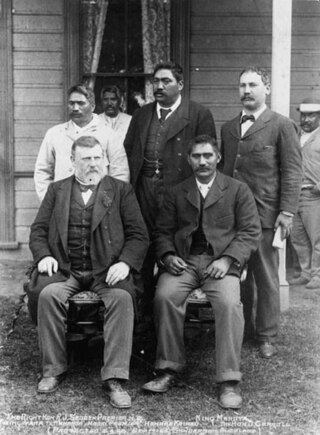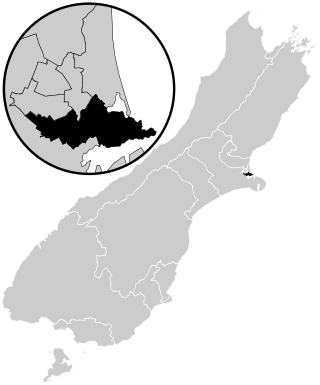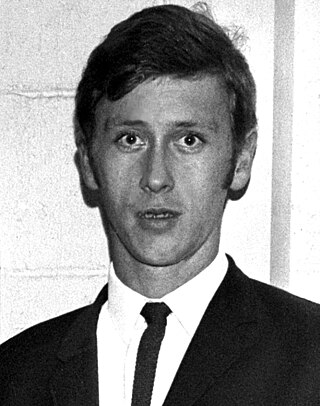Related Research Articles

The 1881 New Zealand general election was held on 8 and 9 December in the Māori and European electorates, respectively, to elect 95 MPs to the 8th session of the New Zealand Parliament.

Lewisham West and Penge is a constituency in Greater London created in 2010 and represented in the House of Commons of the UK Parliament since 2017 by Ellie Reeves of the Labour Party.

Henare Kaihau was a New Zealand Māori politician, serving as Member of the House of Representatives for the Western Maori electorate.

Christchurch Central is a New Zealand parliamentary electorate in the South Island city of Christchurch. The electorate was established for the 1946 election and, until 2011 had always been won by the Labour Party. Since 2008, the incumbent was Brendon Burns but the election night results for the 2011 election resulted in a tie; the special vote results combined with a judicial recount revealed a 47-vote majority for Nicky Wagner, the National list MP based in the electorate. Wagner significantly increased her winning margin in the 2014 election after having declared the electorate "unwinnable" for National earlier in the year following a boundary review. At the 2017 election Wagner lost the seat to Labour's Duncan Webb, who retained it at the 2020 election.

Port Hills was a parliamentary electorate of New Zealand that existed for the 2008 through 2017 general elections. Ruth Dyson of the Labour Party had previously held the Banks Peninsula electorate since the 1999 election that was largely replaced by Port Hills, and held Port Hills for its entire existence before retiring ahead of the 2020 election. The Port Hills electorate was mostly urban, and lost the more rural Banks Peninsula areas of the old electorate to the Selwyn electorate that was also formed for the 2008 election.
Sydenham was a New Zealand parliamentary electorate, from 1881 to 1890 and again from 1946 to 1996. It had notable politicians representing it like Mabel Howard, Norman Kirk and Jim Anderton.
Waitemata was a New Zealand parliamentary electorate, from 1871 to 1946, and then from 1954 to 1978. It was represented by 18 members of parliament.
Lyttelton is a former New Zealand parliamentary electorate. It existed from 1853 to 1890, and again from 1893 to 1996, when it was replaced by the Banks Peninsula electorate.
Western Maori was one of New Zealand's four original parliamentary Māori electorates established in 1868, along with Northern Maori, Eastern Maori and Southern Maori. In 1996, with the introduction of MMP, the Maori electorates were updated, and Western Maori was replaced with the Te Tai Hauāuru and Te Puku O Te Whenua electorates.
Christchurch was a parliamentary electorate in Christchurch, New Zealand. It existed three times. Originally it was the Town of Christchurch from 1853 to 1860. From the 1860–1861 election to the 1871 election, it existed as City of Christchurch. It then existed from the 1875–1876 election until the 1881 election. The last period was from the 1890 election to the 1905 election. Since the 1946 election, a similarly named electorate called Christchurch Central has been in existence.
Heathcote was a 19th-century parliamentary electorate in Christchurch, New Zealand.
City of Dunedin, during the first two parliaments called Town of Dunedin, was a parliamentary electorate in Dunedin in Otago, New Zealand. It was one of the original electorates created in 1853 and existed, with two breaks, until 1905. The first break, from 1862 to 1866, was caused by an influx of people through the Otago Gold Rush, when many new electorates were formed in Otago. The second break occurred from 1881 to 1890. It was the only New Zealand electorate that was created as a single-member, two-member and three member electorate.
Richard Molesworth Taylor, also known as Sydenham Taylor, was a three-term New Zealand Member of Parliament. Born in London in 1835, he moved to Auckland on the Heather Bell in 1846. He travelled to Victoria in 1851, and later to New South Wales and participated in the gold rush before returning to Auckland in 1857. There he briefly joined the militia, serving in the New Zealand Wars, before becoming a government contractor. In 1869 he moved to Canterbury, working as a general contractor until becoming a Member of Parliament in 1886.
William White was a 19th-century New Zealand Member of Parliament in the Sydenham electorate, and Mayor of Sydenham.

Samuel Paull Andrews was a 19th-century politician in Christchurch, New Zealand. Originally from the Isle of Wight, he was the first working class man to become a Member of Parliament in his chosen country.
The 8th New Zealand Parliament was a term of the New Zealand Parliament.
John Crewes was a New Zealand Bible Christian minister, social worker and journalist. He was born in Grampound, Cornwall, England on 15 July 1847.

The Sydenham by-election 1974 was a by-election held in the Sydenham electorate during the term of the 37th New Zealand Parliament on 2 November 1974. Eight candidates stood in total.
The City of Christchurch by-election of 1896 was a by-election held on 13 February 1896 during the 12th New Zealand Parliament in the urban seat of the City of Christchurch. The by-election was triggered by the appointment of William Pember Reeves as Agent-General to the United Kingdom. The Liberal Government led by Richard Seddon had trouble finding a suitable candidate and delayed Reeves' resignation until the day he left his home in Christchurch to take up the London post. Nonetheless, rumours of Reeves' pending resignation had been circulating for a month and candidates were lining up. The Liberal Party candidate who was secured resigned within a week of Reeves' eventual resignation, and a new candidate had to be found. Three candidates contested the election: Richard Molesworth Taylor was the official Liberal Party candidate, Tommy Taylor was a prohibitionist also with liberal views but an ardent opponent of Seddon, and Charles Lewis was the reluctant conservative candidate of the opposition. Being a Liberal Party stronghold, vote splitting between those candidates who held liberal views secured the election win for Lewis, with the Liberal Party candidate coming last.
The City of Christchurch by-election of 1901 was a by-election held on 18 July 1901 during the 14th New Zealand Parliament in the urban seat of the City of Christchurch. The by-election was triggered by the resignation of conservative politician Charles Lewis and won by George John Smith.
References
- ↑ "The Sydenham Electorate". The Star . No. 5580. 30 March 1886. p. 3. Retrieved 4 May 2010.
- 1 2 "The Sydenham Election". The Star . No. 5617. 13 May 1886. p. 3. Retrieved 4 May 2010.